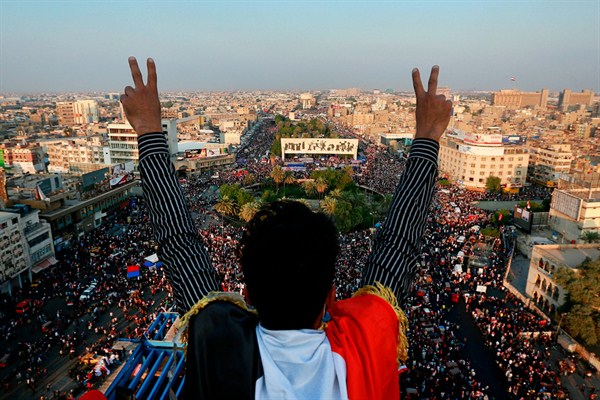“There was no order to kill, yet throughout the country protesters were shot in the head?” one activist in Baghdad exclaimed, incredulous. “How do you explain that?”
A bloody crackdown on anti-government protests in Iraq has killed more than 275 demonstrators and wounded 11,000 people in recent weeks, and the death toll keeps rising. In the face of the government’s ruthlessness, the continued determination of protesters represents a turning point in Iraq’s post-2003 political order. Diverse segments of the Iraqi population—including elementary and middle-school students, oil workers in Iraq’s southern provinces and trade unions—have mobilized to join the young, mostly Shiite protesters demanding widespread reforms and a new government. Protesters want to undo the entire political system set up by U.S.-backed authorities after the fall of Saddam Hussein, which distributes power along sectarian lines and features restrictive electoral laws that hinder independent candidates, giving the ruling elite little incentive to reform.
According to a report by the United Nations, Iraqi security forces started using live ammunition against protesters when the demonstrations began on Oct. 1, with some forces even shooting protesters in the head. An Iraqi government committee investigating those killings announced on Oct. 22 that while no official orders were given to shoot protesters, security forces had used excessive force and live fire after “officers and commanders lost control over their forces.” An Interior Ministry spokesman assured the public two days later that the violence would not be repeated.

